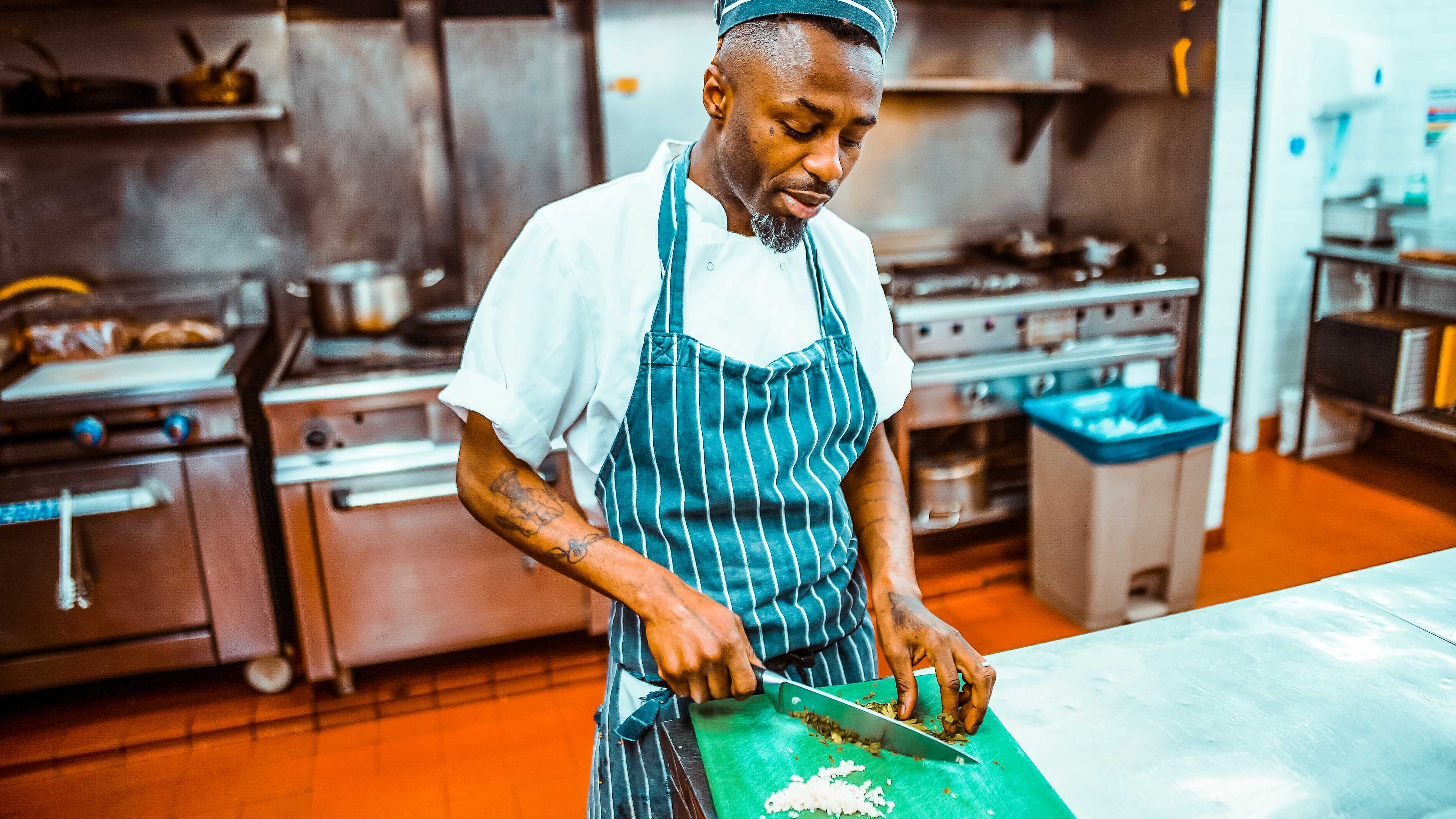Top 5 Books for Culinary Arts Inspiration

Working in the culinary arts is both an art and a science. You have tasks and responsibilities that you must execute all while giving customers a great experience. Some culinary arts professionals are more traditionally trained, while others may have learned by watching and doing. Regardless of how you got to your position, continued learning is a must to keep up with best practices and culinary trends.
Whether you are back of the house, front of the house, or interested in food in any way, these 5 books are essential reads for those looking to brush up on culinary basics, try new flavors, and master new techniques.
The Flavor Bible, by Andrew Dornenburg and Karen Page
You may know how to follow a recipe, but how do you take cooking a step further? This culinary bible teaches readers to follow their intuition and experiment with new flavors and cooking methods. After 8 years in development, The Flavor Bible draws from the experience of top chefs from restaurants such as Blue Hill, Gramercy Tavern, and Le Bernardin. From this book, you’ll learn how to brighten flavors with acids, layer ingredients, and balance a meal.
Though this is not a cookbook, it’s a great reference accompaniment for semi-seasoned cook who wants to develop their recipes. You might find this book has a permanent place on the kitchen counter.
The Professional Chef, by The Culinary Institute of America
This book is essential reading for those who want to master the basics. If you want to know the best way to cook certain cuts of meat or learn how to make the fundamental sauces, you’ll get a lot of use out of this educational book.
Starting, you’ll read about being a culinary professional; what it takes to get there, and how to be successful. There are many components to owning a restaurant or running a kitchen that don’t include food. Even the best chefs can feel out of their league when it comes to running a business. From there, the book dives into menu creation, nutrition, safety, and equipment identification. Once you’ve covered these foundations, you’ll be taught about common ingredients, essential cooking techniques, and recipes every cook should master.
The Professional Chef should be considered a required reading for those getting into cooking and serves as a great reference book for more seasoned culinary professionals.
The Food Lab, by J. Kenji López-Alt
Food science fans, this one is for you. Author López-Alt��’s debut cookbook has put his culinary experiments to paper. From pizza dough fermentation to boiling water, he translates science into technique. This book is for detail lovers. For anybody interested in making a smashed burger, there’s a tangible difference in smashing the patty after 30 seconds and 1 minute. In addition to the nitty-gritty science, you’ll find hundreds of recipes to try for yourself.
The author’s passion comes through in his recipes and explanations. After reading this book, you’ll find yourself excitedly telling your friends about how salt and meat combine to make the perfectly textured sausage.
The Whole Beast: Nose to Tail Eating, by Fergus Henderson
Author Fergus Henderson takes on the task of making offal, or “variety meats”, less intimidating to professionals and home chefs alike. Although Americans love their meats, they tend to stick to a few cuts, making for a lot of wasted food. Focusing specifically on pigs, Henderson makes even the most unfamiliar of cuts feel approachable. With recipes like Roast Bone Marrow with Parsley Salad or Pea and Pig’s Ear Soup, this book will propel you into the rewarding world of the unfamiliar.
As the author says in the book, “If you’re going to kill the animal it seems only polite to use the whole thing.” Cooking with this book will have you on a first-name basis with your local butcher.
The Flavor Matrix: The Art and Science of Pairing Common Ingredients to Create Extraordinary Dishes, by James Briscione and Brooke Parkhurst
If you’ve ever wondered why people dip their fries in their Frosty, this should be your next read. As the second science-centric book on our list, The Flavor Matrix is a beautifully illustrated guide to pairing flavors. It’s perhaps a bit more scientific, with in-depth explanations about the chemicals and molecules that cause our food to taste sour, savory, sweet, salty, or umami. Still, the authors keep the organic chemistry approachable enough that you don’t need a science background to appreciate it. In this book, you’ll find exciting pairings you may never have considered, such as tomato and coconut or clam and melon.
This book is great for a beginner cook wanting to understand flavors or an experienced chef looking to elevate their cuisine and get more creative in the kitchen.
Why are these books helpful to those working in the culinary arts field? For one, you’ll be forced to get back to basics. Revisiting your culinary foundation is a great way to get in touch with your roots. You might find a forgotten technique or ingredient that reinvigorates your current menu. You’re also bound to learn something completely new. The best culinary professionals are constantly looking for new flavor combinations, cooking methods, and menu inspiration.
If you’re not working in a kitchen, these books are still useful for those in the food and beverage industry. As a server, you’ll need to be familiar with cooking methods and common ingredients. Being able to explain flavor pairings can make a huge difference when upselling items. Passion and expertise go a long way in having customers trust your recommendations.
If you’re experienced as a chef, curious about food, or just starting to pick up hospitality gigs, you’ll find that these five books will get you excited to learn something new and elevate your food knowledge and kitchen skills. At the very least, they’ll get your appetite going.


